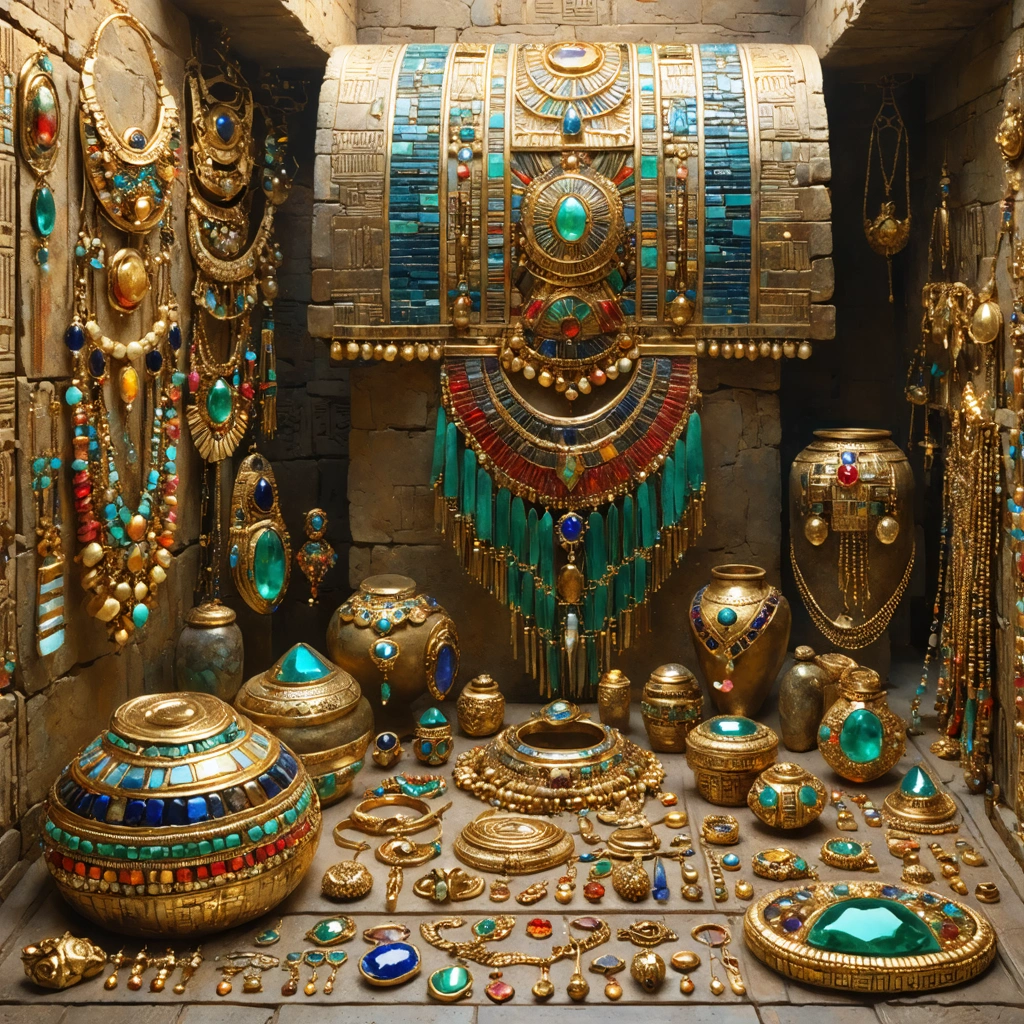
Introduction
Archaeology often provides us with fascinating insights into past civilizations, revealing their lifestyles, cultural practices, and aesthetic preferences. A recent discovery at the Karnak Temple in Egypt underscores this wonderfully, as archaeologists have unearthed a 2,600-year-old jewelry stash that includes a gold statuette portraying a family of gods.
Discovery at Karnak Temple
The Karnak Temple, located in Luxor, Egypt, has long been a site of significant archaeological interest. It is the largest ancient religious site in the world, comprising a vast mix of decayed temples, chapels, pylons, and other buildings. The recent discovery of ancient jewelry at this site has captured the attention of archaeologists and history enthusiasts worldwide. The hoard, estimated to be 2,600 years old, is an exquisite collection of beautifully crafted ornaments, each piece telling a story of the people who once treasured them.
The Jewelry Stash
The unearthed collection consists of a variety of pieces, including bracelets, amulets, and a particularly striking gold statuette. This statuette depicts a family of gods, a common theme in Ancient Egyptian mythology and art. The artistic expression visible in the statuette and the other pieces is remarkable, demonstrating the ancient Egyptians’ mastery over gold work and their keen eye for detail.
Significance of the Find
This discovery is significant for several reasons:
- It provides new insights into the aesthetic preferences and craftsmanship of the people from that time.
- The presence of the statuette among the jewelry suggests that these pieces might have held religious importance and could have been used in rituals or ceremonies.
- The stash offers potential clues about trade routes and economic practices of the time, as it may indicate the sources of the gold and other materials used in the jewelry.
Conclusion
The discovery of this 2,600-year-old jewelry stash at Karnak Temple paints a vivid picture of the past, offering us an intimate glimpse into Ancient Egyptian civilization’s artistry, religious practices, and economic activities. As archaeologists continue to study these magnificent relics, we can look forward to uncovering more details about this fascinating era of human history.




